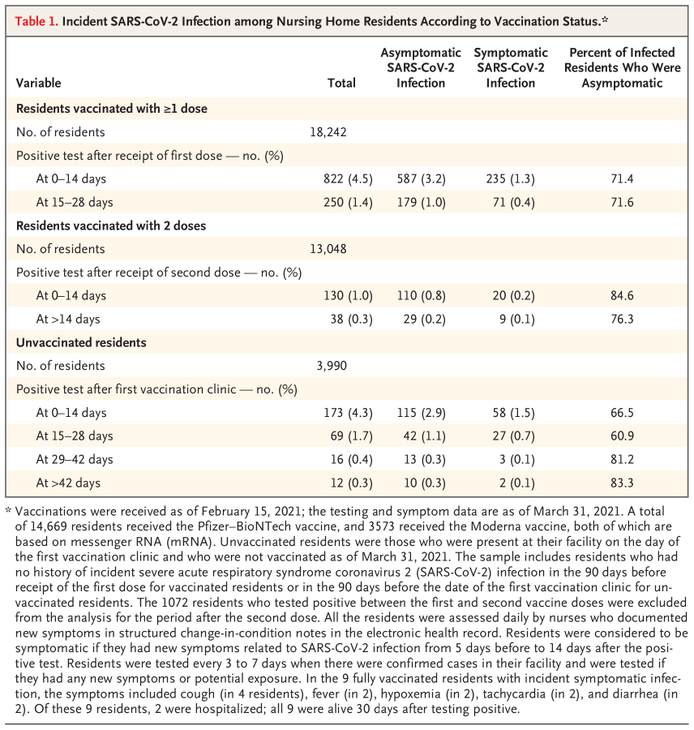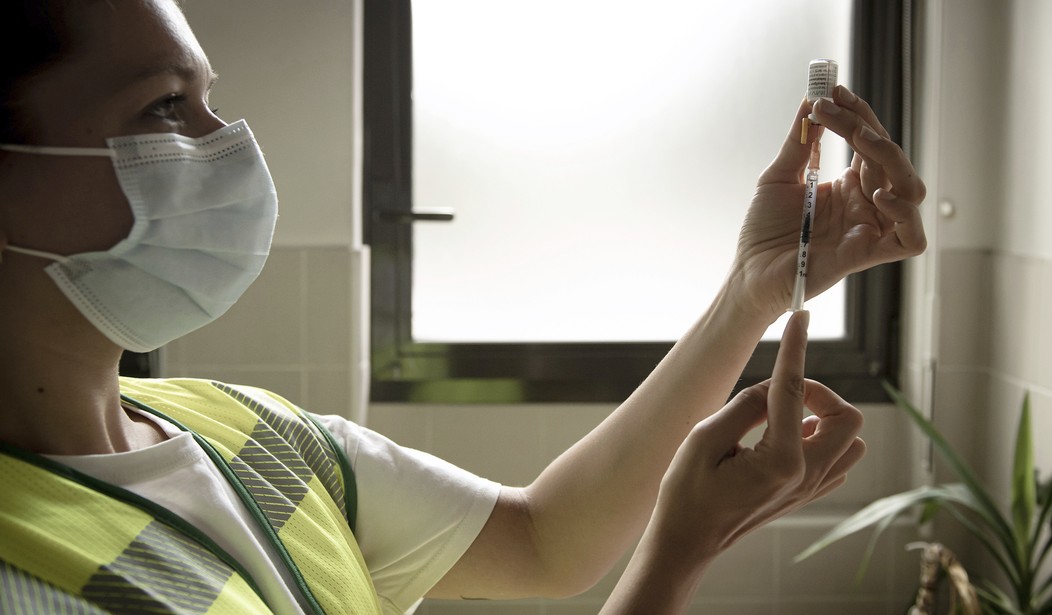At the beginning of last week I referenced a Cleveland Clinic study that demonstrated that vaccinated employees of the institution contracted COVID at a substantially higher rate than those who chose not to get vaccinated, and that the relationship gets stronger the more doses of the vaccine the person got.
The relationship was striking and worrisome, and even led the researchers–no slouches here, as the Cleveland Clinic rivals the Mayo Clinic as the most prestigious medical institution in the country–to suggest a reconsideration of current vaccine policies. They don’t exactly criticize current policy, but their analysis clearly implied that the current policy is a mistake. They noted that theirs was hardly the only study to detect a positive correlation between vaccination and infection.

We still have a lot to learn about protection from COVID-19 vaccination, and in addition to a vaccine’s effectiveness it is important to examine whether multiple vaccine doses given over time may not be having the beneficial effect that is generally assumed.
Well yet another study–this time in a huge cohort of nursing home patients–shows that getting the COVID vaccine, especially multiple doses–may increase your chance of contracting COVID. The study was done in 2021, so at the time the vaccine was all the rage and it was being pushed very hard based upon very strong claims of effectiveness that the study does not come close to backing up.
The sample was huge, and because these patients are in controlled environments the medical records are consistent and easy to interpret. There are remarkably few of the usual confounding factors in medical studies.
The sample included 18,242 residents who received at least one dose of mRNA vaccine; 14,669 residents (80.4%) received the Pfizer–BioNTech vaccine, and 3573 (19.6%) received the Moderna vaccine. Of these 18,242 residents, 13,048 also received the second dose of vaccine. A total of 3990 residents were unvaccinated. Table S1 in the Supplementary Appendix summarizes the characteristics of the residents.
This study basically showed no benefit at all to the patients from getting the vaccine, in a cohort that is especially vulnerable to getting the virus. It also showed that in the vast majority of both cohorts the infections were essentially benign, with few or no symptoms.
The incidence of infection decreased over time among both vaccinated residents and unvaccinated residents (Table 1). After receipt of the first vaccine dose, there were 822 incident cases (4.5% of vaccinated residents) within 0 to 14 days and 250 cases (1.4%) at 15 to 28 days. Among the 13,048 residents who received both doses of vaccine, there were 130 incident cases (1.0% of vaccinated residents) within 0 to 14 days after receipt of the second dose and 38 cases (0.3%) after 14 days (which included 19 cases occurring 15 to 21 days after receipt of the second dose) (Fig. S1). Among unvaccinated residents, incident cases decreased from 173 cases (4.3% of unvaccinated residents) within 0 to 14 days after the first vaccination clinic to 12 cases (0.3%) at more than 42 days after the clinic.
Across all the study groups, most infections were asymptomatic, and the incidence of both asymptomatic and symptomatic infections decreased. Nursing homes that were located in counties with the highest incidence of SARS-CoV-2 infection had the most incident cases but still had large decreases (Table S2). We observed inconsistent patterns in the incidence of infection among residents relative to rates of vaccination among staff members (Table S3).
As you can see, unvaccinated residents had slightly lower rates of COVID early on and the same incidence of infection at extended periods. Clearly the vaccine has little impact on either infection rates with one or two shots, and no apparent impact on transmission of the virus. Also the authors excluded any data on whether the vaccination status had any impact on outcomes because…the evidence seemed to show none.
Overall, it sure looks like rates of infections, transmission, and outcomes was pretty much dependent upon little more than whether the virus was raging through the overall population at the time. Vaccination status seemed to have little impact overall. Two doses were better than one or none for preventing infection in the 15-28 day time period, but symptoms were worse if you got it.
Yet in the discussion the authors seem to deviate from what the evidence indicates. The evidence shows no particular benefit to a single dose of vaccination, and none at all for preventing infection or transmission. It does indicate benefit to those getting two doses, but in the cohort of patients who got two doses and got COVID the cases were more likely to be symptomatic, which is contrary to expectation.
These findings show the real-world effectiveness of the mRNA vaccines in reducing the incidence of asymptomatic and symptomatic SARS-CoV-2 infections in a vulnerable nursing home population. Our observation of a reduced incidence of infection among unvaccinated residents suggests that robust vaccine coverage among residents and staff, together with the continued use of face masks and other infection-control measures, is likely to afford protection for small numbers of unvaccinated residents in congregate settings. Still, the continued observation of incident cases after vaccination highlights the critical need for ongoing vaccination programs and surveillance testing in nursing homes to mitigate future outbreaks.
Huh?
Let’s look at the numbers:
- Vaccinated infections at 0-14 days: 4.5%. Unvaccinated: 4.3%
- Single dose vaccinated infections at 15-28 days: 1.4%. Unvaccinated 1.7% (pretty minor difference)
- Unvaccinated infections after 42 days: .3% for both cohorts
In both groups the vast majority of the cases were asymptomatic. In fact, the percentage of cases that were symptomatic in vaccinated patients was for the time period studied higher than in unvaccinated patients.

This is a very very mixed bag of results and certainly contrary to the narrative we were fed at the time, and to much of what we are told still.
Particularly bizarre is the lack of data on end points: how did the patients recover? How many died in each group? Why do they not provide this data since it would bear directly on the most pressing questions we would have.
And, of course, why was this study not widely discussed, since it contradicted the narrative at the time (and the one still being pushed on us?).
We can only speculate.








Join the conversation as a VIP Member